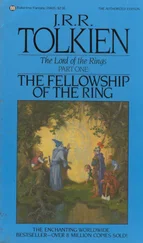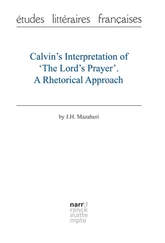Helge Fauskanger - J.R.R. Tolkien’s Lord’s prayer and Hail Mary in Quenya - Syntactical and Etymological Analysis
Здесь есть возможность читать онлайн «Helge Fauskanger - J.R.R. Tolkien’s Lord’s prayer and Hail Mary in Quenya - Syntactical and Etymological Analysis» весь текст электронной книги совершенно бесплатно (целиком полную версию без сокращений). В некоторых случаях можно слушать аудио, скачать через торрент в формате fb2 и присутствует краткое содержание. Жанр: Языкознание, на английском языке. Описание произведения, (предисловие) а так же отзывы посетителей доступны на портале библиотеки ЛибКат.
- Название:J.R.R. Tolkien’s Lord’s prayer and Hail Mary in Quenya: Syntactical and Etymological Analysis
- Автор:
- Жанр:
- Год:неизвестен
- ISBN:нет данных
- Рейтинг книги:5 / 5. Голосов: 1
-
Избранное:Добавить в избранное
- Отзывы:
-
Ваша оценка:
- 100
- 1
- 2
- 3
- 4
- 5
J.R.R. Tolkien’s Lord’s prayer and Hail Mary in Quenya: Syntactical and Etymological Analysis: краткое содержание, описание и аннотация
Предлагаем к чтению аннотацию, описание, краткое содержание или предисловие (зависит от того, что написал сам автор книги «J.R.R. Tolkien’s Lord’s prayer and Hail Mary in Quenya: Syntactical and Etymological Analysis»). Если вы не нашли необходимую информацию о книге — напишите в комментариях, мы постараемся отыскать её.
J.R.R. Tolkien’s Lord’s prayer and Hail Mary in Quenya: Syntactical and Etymological Analysis — читать онлайн бесплатно полную книгу (весь текст) целиком
Ниже представлен текст книги, разбитый по страницам. Система сохранения места последней прочитанной страницы, позволяет с удобством читать онлайн бесплатно книгу «J.R.R. Tolkien’s Lord’s prayer and Hail Mary in Quenya: Syntactical and Etymological Analysis», без необходимости каждый раз заново искать на чём Вы остановились. Поставьте закладку, и сможете в любой момент перейти на страницу, на которой закончили чтение.
Интервал:
Закладка:
3. Syntactical/Analytical Commentary: The Textual Context Analysed
I. THE LORD’S PRAYER
Átaremma i ëa han ëa ·
Our father who art in heaven,
It is not quite certain that this traditional English wording of the prayer actually corresponds to the Quenya text, though it certainly begins with the words "our Father who art…": Átaremma"our father", sc. # átar "father" (other sources have atar with a short a ) + - mma "ours", with a connecting vowel - e - slipped in between the noun and the ending to avoid an impossible consonant cluster. This ending - mma denotes an exclusive "our"; átaremma is not used for "our father" when his children are talking about him among themselves (that is * átarelma ), but when they are addressing another party that is not among his children: In this case, it is the father himself that is being addressed. i"who", relative pronoun. ëa"is" or "exists", hana hitherto unknown word that according to the normal English wording of the prayer ought to be the preposition "in" (though it is wholly dissimilar to the normal word for "in", mi ). See the Lexical Commentary for further discussion of this word [5] VT43 argues that han means "beyond".
. The second ëawould correspond to "heaven". If this is a noun, it would have to be equated with Eä , the well-known Quenya name of the created universe, despite the fact that in the text before us it is not capitalized. This word is a surprising choice as a translation for "heaven"; Tolkien did not even use it when translating "thy will be done on earth as it is in heaven" a few lines down. If han is a preposition, it would seem to somehow describe Eru’s position in relation to Eä, and in light of the normal wording of the prayer, Eru must in some sense be "in" Eä. Perhaps han may mean something along the lines of "permeating"? Yet in what precise sense Eru is present within Eä was something of a mystery even to the inhabitants of Middle-earth, as is evident from the Athrabeth Finrod ah Andreth (MR:322: "How could Eru enter into the thing [Eä] that He has made, and that which He is beyond measure greater? … He is already in it, as well as outside…but indeed the in-dwelling and the out-living are not in the same mode… So may Eru in that mode be present in Eä that proceeded from him"). Of course, when trying to interpret a translation of a text that belongs to our world rather than Tolkien’s invented world, attempting to glean information from his mythos may be beside the point. Perhaps Tolkien simply meant to say something like *"our Father who is in (?) the universe". It should be noted, though, that there is an old Gnomish text that seems to feature a preposition han = "above" (see the relevant entry in the Lexical Commentary below for reference). If this is what han means here, Tolkien would seem to have rephrased "who art in heaven" to "who art above the universe", perhaps because people within his mythos "did not conceive of the sky as a divine residence" (Letters:204; cf. the entry Erumande in the Lexical Commentary).
Another, even more ingenious interpretation could be that Tolkien here did not translate "who art in heaven", but substituted another Bible-based phrase, namely God’s self-designation "I am that I am" or "I am who I am" (Exodus 3:14; Hebrew `ehyeh `asher `ehyeh ). Could Tolkien have re-phrased the first line of the prayer as *"our Father who art that thou art"? This would allow us to interpret ëa as a verb in both of its occurrences. If this is so, han would have to mean something like *"that" or *"that which". However, this theory seems difficult to maintain, even apart from the fact that a devout Catholic would hardly feel free to significantly rephrase the Lord’s Prayer. If i ëa han ëa is to mean *"who art that thou art", the second ëa would be expected to include a second person pronominal ending (probably - lye ), but no such suffix is present. Moreover, such an interpretation would require that ëa can be used as a copula (like ná ), but our few examples hint that this is not so. The verb ëa (also spelt eä ) may be translated "is", but we have no example of it being used to connect a subject with a noun or an adjective; rather it means "exists", and so Tolkien translated it in at least one case (VT39:7). Hence in Cirion’s Oath (UT:305, 317) we have the sentence i Eru i or ilye mahalmar eä , "the One who is above all thrones": Eru exists in this sublime position; or ilyë mahalmar "above all thrones" may here be seen as an adverbial phrase rather than a predicate. No matter how we interpret the precise syntax, this example indicates that ëa rather than ná is used for "is" when a subject is to be connected to a prepositional phrase denoting a position. It seems most reasonable, then, to assume that Átaremma i ëa han ëa is another example of this, and that this means something along the lines of *"our Father who is in Eä" (though the precise meaning of han , that we take to be a preposition of some sort, must remain as uncertain as the spatial relation between Eru and Eä) [6] VT43 takes i ëa han ëa as meaning "who is beyond Eä", which would certainly not be a direct translation of "who is in heaven". If this is the correct interpretation, it is still surprising that the second ëa is not capitalized as Eä or Ëa , to identify it as a proper name.
.
Átaremma i ëa han ëa provides a new example of the word order used in a relative phrase. Here we have subject + relative pronoun + verb + prepositional phrase. On the other hand, the wording i Eru i or ilyë mahalmar eä in Cirion’s Oath inverts the order of the verb and the prepositional phrase, placing the verb at the end (much like in a German relative phrase, but in Cirion’s Oath the verb eä is actually not absolutely final; there is an adverb tennoio "for ever" following it). Carrying the word order used in Cirion’s Oath over to the Lord’s Prayer would produce * Átaremma i han ëa ëa , the first ëa being a noun (Eä, the universe) and the second a verb "is, exists". Perhaps Cirion’s Oath displays the more normal word order, the Prayer using an alternative wording to avoid two ëa in sequence. In a highly inflected language like Quenya, the word order would typically be quite free anyway. It may be noted that the sole relative sentence in Namárië – the words tellumar, yassen tintilar i eleni , literally "domes, which-in twinkle the stars" (RGEO:66-67) – has the verb tintilar "twinkle" immediately following the relative pronoun ya "which" (here inflected for plural locative: yassen ). This quote was from the "prose version" of Namárië in RGEO; the "poetic" version in LotR does not have the noun tellumar "domes" immediately in front of the relative pronoun, but still agrees that the verb follows immediately after the relative pronoun. This would be the same word order as in Átaremma i ëa … "our Father who is…" It would seem that Quenya does not have a fixed word order in relative sentences, but typically the verb may follow immediately after the relative pronoun, as in the phrases Átaremma i ëa and tellumar, yassen tintilar .
na aire esselya ·
hallowed be thy name,
Читать дальшеИнтервал:
Закладка:
Похожие книги на «J.R.R. Tolkien’s Lord’s prayer and Hail Mary in Quenya: Syntactical and Etymological Analysis»
Представляем Вашему вниманию похожие книги на «J.R.R. Tolkien’s Lord’s prayer and Hail Mary in Quenya: Syntactical and Etymological Analysis» списком для выбора. Мы отобрали схожую по названию и смыслу литературу в надежде предоставить читателям больше вариантов отыскать новые, интересные, ещё непрочитанные произведения.
Обсуждение, отзывы о книге «J.R.R. Tolkien’s Lord’s prayer and Hail Mary in Quenya: Syntactical and Etymological Analysis» и просто собственные мнения читателей. Оставьте ваши комментарии, напишите, что Вы думаете о произведении, его смысле или главных героях. Укажите что конкретно понравилось, а что нет, и почему Вы так считаете.












